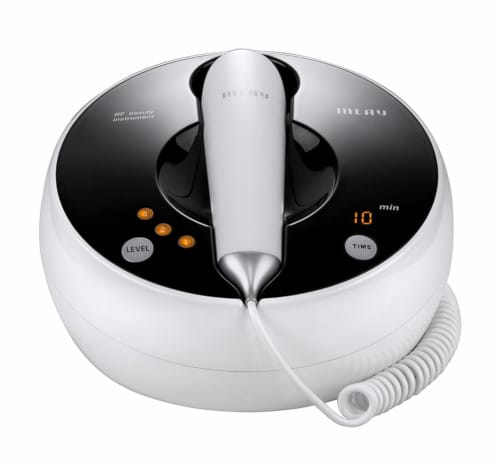Last Updated on 6 months by Francis
Have you ever wondered if infrared technology has the power to see through clothing? It’s a question that has sparked curiosity and even circulated some claims and videos online. In this article, we will delve into the science behind infrared imaging technology to separate fact from fiction and shed light on the truth.
Contents
Key Takeaways:
- Infrared technology cannot see through solid objects like clothing.
- Infrared cameras detect infrared radiation (heat) emitted by objects.
- Infrared imaging creates thermal images by capturing temperature differences.
- Body scanners at airports use millimeter wave or backscatter technology, not infrared, to create images.
- Infrared technology has various practical applications but does not possess the ability to see through clothing.
The Science Behind Infrared Technology
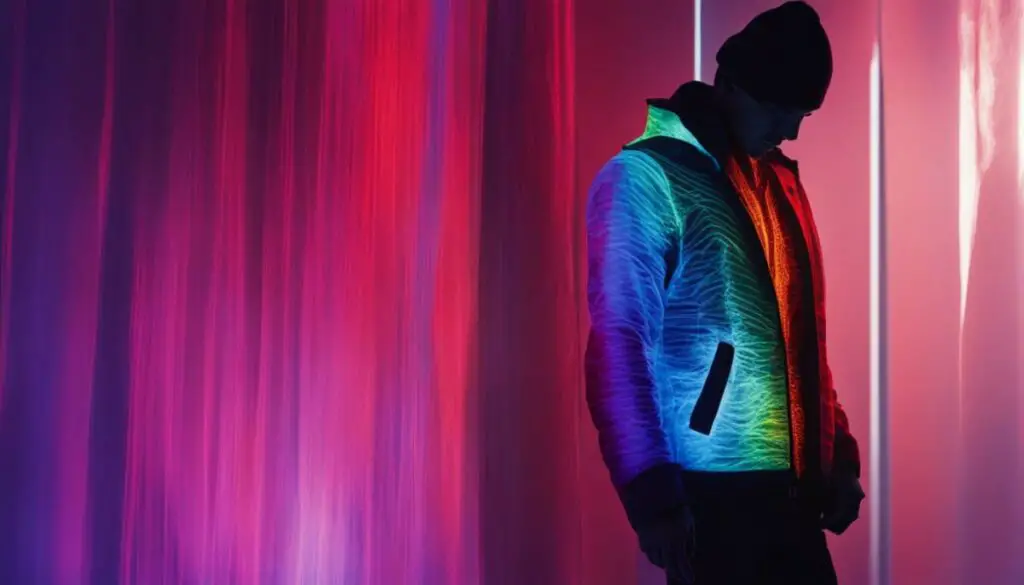
Infrared imaging technology operates by detecting the infrared radiation emitted by objects. This innovative technology employs specialized sensors in cameras to convert infrared light into visible images. By capturing variations in temperature, infrared cameras are capable of generating thermal images that showcase thermal patterns and heat signatures of objects. However, it is important to note that infrared technology does not possess the ability to see through solid objects, such as clothing.
Infrared vision is often misunderstood, leading to misconceptions regarding its capability to see through clothing. In reality, infrared technology used in body scanners for security purposes at airports utilizes millimeter wave or backscatter technology, not infrared, to create images. Privacy concerns have been raised regarding body scanning technology, emphasizing the need for clear regulations and guidelines to protect individual privacy.
While infrared radiation can interact with various materials, including clothing, the level of transparency depends on multiple factors. Certain fabrics may allow infrared wavelengths to penetrate more easily, but this transparency is limited to detecting thermal patterns and heat emission. Detailed imaging or seeing through solid clothing is not within the capabilities of infrared technology.
Table: Applications of Infrared Imaging Technology
| Industry | Applications |
|---|---|
| Law Enforcement | Night vision, detection of heat signatures, hidden object identification |
| Search and Rescue | Locating missing persons based on body heat detection |
| Industrial | Equipment monitoring, leak detection, hotspot identification |
In conclusion, the science behind infrared technology revolves around the detection of infrared radiation emitted by objects. Although infrared cameras can distinguish thermal patterns and heat signatures, they are unable to see through clothing or solid objects. It is crucial to rely on accurate information and dispel misconceptions when exploring the capabilities of infrared imaging technology.
Debunking the Myth of Infrared Vision
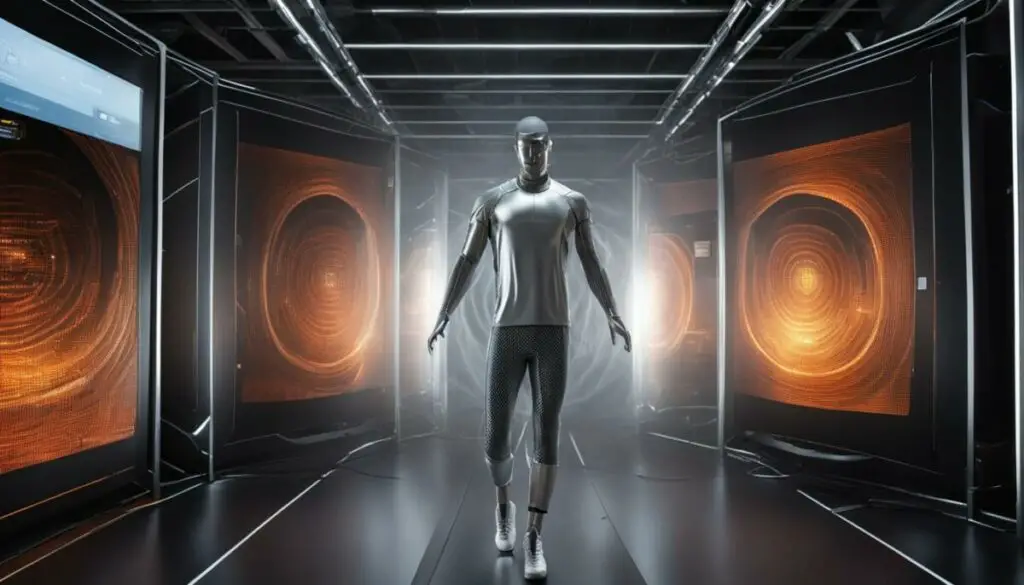
The myth of infrared vision, where infrared can supposedly see through clothing, has been a subject of fascination and concern. However, it is important to understand the reality behind this misconception. Infrared technology, such as body scanning technology used in security checkpoints at airports, does not possess the ability to see through clothing. Instead, these systems utilize millimeter wave or backscatter technology to create images that detect objects on or beneath clothing, such as concealed weapons.
Privacy concerns have been raised regarding the use of body scanning technology, highlighting the need for clear regulations and guidelines. While the purpose of these systems is to enhance security and identify potential threats, it is crucial to strike a balance between safety and privacy. As technology advances, it becomes increasingly important to ensure that appropriate measures are in place to safeguard personal privacy.
It is important to distinguish between the capabilities of different technologies and separate fact from fiction. Infrared technology, in the context of body scanning or thermal imaging, does not possess the ability to see through clothing. The transparency of clothing to infrared radiation is limited to detecting thermal patterns and heat emission. Understanding the limitations and possibilities of infrared technology is essential to avoid misconceptions and make informed decisions.
Understanding Infrared and Clothing Interaction

When it comes to the interaction between infrared radiation and clothing, there are a few key factors to consider. While infrared wavelengths have the ability to penetrate some fabrics to a certain extent, it is important to note that this transparency is limited to detecting thermal patterns and heat emission, rather than providing a detailed image or seeing through solid clothing. The level of transparency can vary depending on various factors such as the type of fabric, its thickness, and the specific wavelengths of infrared being used.
While some fabrics may allow more infrared radiation to pass through, it is crucial to understand that this does not equate to a see-through effect similar to X-ray vision. Infrared technology primarily focuses on capturing differences in temperature and heat signatures, providing valuable insights for applications such as thermal imaging and forensic investigations. It is essential to rely on accurate information and discard misconceptions surrounding the capabilities of infrared technology.
The Application of Infrared in Forensic Investigations
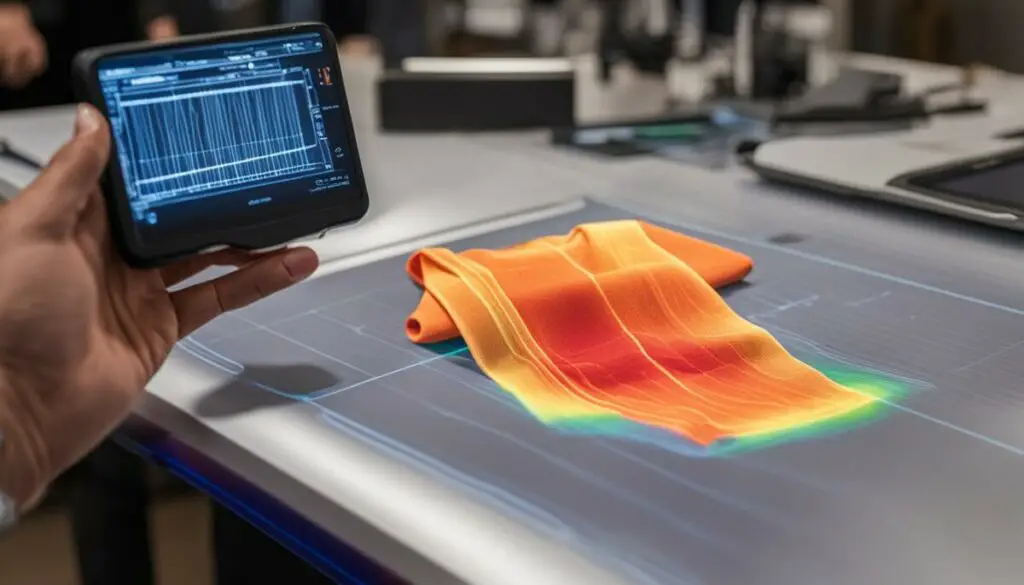
Infrared imaging technology has proven to be a valuable tool in forensic investigations. By utilizing thermal imaging, investigators can detect temperature variations and uncover crucial evidence. Infrared spectroscopy is also used to analyze the chemical composition of substances, providing valuable insights for solving crimes.
One of the key applications of infrared imaging in forensic analysis is the detection of bloodstains. By capturing thermal images, investigators can identify areas of different temperatures, indicating the presence of blood. This technique can be particularly useful in cases where blood is not visible to the naked eye, such as after attempts to clean or conceal the stain.
Additionally, infrared imaging can aid in the identification of fingerprints. The heat emitted by a person’s fingers leaves behind a thermal imprint on surfaces they touch. Infrared cameras can detect these heat patterns, allowing forensic experts to visualize and enhance fingerprints that may otherwise be difficult to identify.
| Application | Benefits |
|---|---|
| Bloodstain detection | Identifies blood not visible to the naked eye |
| Fingerprint analysis | Enhances and visualizes hard-to-see fingerprints |
| Chemical analysis | Provides insights into the composition of substances |
Infrared imaging technology plays a significant role in forensic investigations, enabling the detection of crucial evidence such as bloodstains and fingerprints. By harnessing thermal imaging and spectroscopy, forensic experts can uncover valuable insights and contribute to solving crimes.
It is important to note that infrared imaging in forensic investigations focuses on surface temperature changes and does not involve seeing through clothing or other solid objects. This distinction is essential to understanding the capabilities and limitations of infrared technology in the forensic field.
Limitations of Infrared Technology
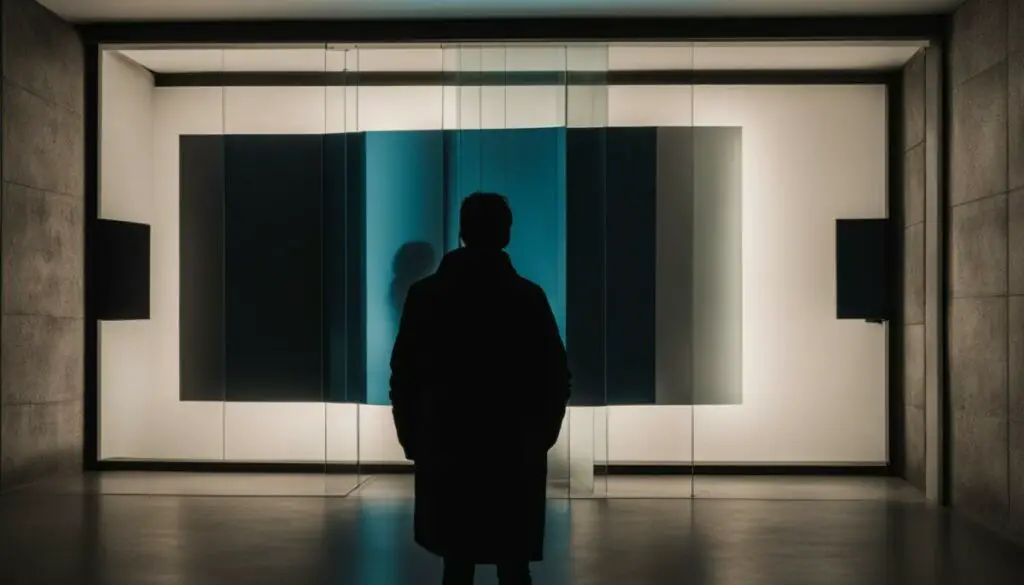
While infrared technology offers a wide range of applications and benefits, it is important to recognize its limitations, particularly when it comes to visibility through barriers. Infrared cameras are unable to see through walls, concrete, glass, or metals, as these materials block or reflect infrared radiation. This means that the camera’s image capture is limited to the surface, preventing it from capturing images beyond the barrier.
Several factors can also affect the visibility of objects when using infrared imaging. The thickness, conductivity, and temperature of the barrier material can impact the camera’s ability to detect objects on the other side. For example, thick or highly conductive materials may obstruct the infrared radiation, resulting in limited visibility. Similarly, extreme temperature variations can distort the thermal patterns being captured by the camera.
“Infrared imaging technology has revolutionized various industries, from law enforcement to industrial applications, but it is crucial to understand its limitations. While it can provide valuable insights and detect heat signatures, it falls short when it comes to visibility through certain barriers,” says Dr. Sarah Thompson, an expert in infrared technology.
The Importance of Understanding Limitations
Recognizing the limitations of infrared technology is essential for accurate interpretation and decision-making. It ensures that users do not rely solely on infrared imaging when detailed images or visibility beyond barriers are required. By understanding these boundaries, professionals can effectively utilize infrared technology in conjunction with other tools and techniques to achieve the desired outcomes in their respective fields.
| Barrier Material | Visibility through Barrier |
|---|---|
| Walls | Infrared radiation is blocked |
| Concrete | Infrared radiation is blocked |
| Glass | Infrared radiation is reflected |
| Metals | Infrared radiation is blocked or reflected |
Despite its limitations, infrared technology remains a valuable tool in various industries. Its ability to detect thermal patterns and identify heat signatures makes it incredibly useful in law enforcement, search and rescue operations, and industrial applications. By combining infrared technology with other complementary methods, professionals can maximize its benefits while minimizing the impact of its limitations.
Real-World Uses of Infrared Technology

Infrared imaging technology plays a crucial role in various real-world applications, particularly in law enforcement and search and rescue operations. Its ability to detect heat signatures and thermal patterns makes it a valuable tool in these fields, aiding in locating suspects, identifying hidden objects, and finding missing persons.
Law enforcement agencies rely on infrared cameras to navigate dark or obscured environments. These cameras can detect the heat signatures associated with criminal activities, providing officers with crucial information for making informed decisions. Additionally, infrared technology enables the identification of concealed objects, such as weapons or illicit substances, helping to ensure public safety.
Search and rescue teams also benefit greatly from infrared technology. By detecting body heat, infrared cameras can assist in locating missing persons, especially in challenging conditions like dense forests or at night. This capability significantly enhances the efficiency and effectiveness of search and rescue operations, increasing the chances of a successful outcome.
| Application | Benefits of Infrared Technology |
|---|---|
| Law Enforcement | – Locating suspects in dark or obscured environments – Identifying hidden objects – Detecting heat signatures associated with criminal activities |
| Search and Rescue | – Locating missing persons – Enhancing efficiency in challenging conditions – Detecting body heat for increased accuracy |
| Industrial | – Monitoring equipment and detecting abnormalities – Identifying leaks and hotspots for prevention and maintenance – Enhancing overall safety and efficiency in industrial settings |
Beyond law enforcement and search and rescue, infrared technology also finds applications in industrial settings. It is utilized to monitor equipment, detect leaks, and identify hotspots in various industries. By capturing thermal images, infrared cameras can assist in preventive maintenance and ensure the safety and efficiency of industrial operations.
In conclusion, the practical uses of infrared technology encompass a wide range of fields, including law enforcement, search and rescue, and industrial applications. Its ability to detect thermal patterns and heat signatures provides valuable insights and enhances operational efficiency. However, it is important to note that while infrared technology can detect heat, it does not possess the ability to see through clothing or solid objects.
Exploring the Capabilities of Thermal Imaging
Thermal imaging, a subset of infrared technology, offers unique capabilities that make it invaluable in various fields. One of its remarkable advantages is its ability to provide visibility in complete darkness. By detecting variations in heat, thermal cameras can capture images even when there is no visible light available. This makes them indispensable tools for applications that require vision in low-light or nighttime environments.
With thermal imaging, heat detection becomes possible, allowing users to identify temperature anomalies and patterns with ease. Whether it’s monitoring heat distribution in industrial settings or identifying hotspots in electrical systems, thermal cameras excel at visualizing heat signatures. This enables early detection of potential issues, preventing breakdowns and ensuring safety.
Thermal imaging, with its ability to see heat, provides a whole new level of visibility in darkness. It’s like having night vision at your disposal, allowing you to navigate and analyze thermal patterns with precision.
The applications of thermal imaging extend beyond industrial and safety purposes. In law enforcement, thermal cameras aid in locating suspects in dark or obscured environments, making it easier to apprehend criminals and ensure public safety. Additionally, search and rescue teams rely on thermal imaging to detect body heat signatures, aiding them in locating missing persons more efficiently.
Advantages of Thermal Imaging:
- Visibility in complete darkness
- Heat detection for identifying anomalies and patterns
- Enhanced vision for law enforcement and search and rescue operations
- Early detection of potential issues in industrial settings
Thermal imaging technologies continue to evolve, offering improved image quality, higher resolution, and enhanced features. As a result, their applications are expanding across various industries, proving to be an invaluable asset in enabling vision and detection when traditional methods fall short.
Conclusion
In conclusion, infrared technology offers a range of practical applications, including thermal imaging, but it does not possess the ability to see through clothing or other solid objects. While infrared cameras can detect thermal patterns and heat emission, they cannot provide detailed images or reveal what is underneath clothing. It is crucial to rely on accurate information and separate fact from fiction when it comes to the capabilities of infrared technology.
Despite the misconceptions and hoaxes surrounding clothing transparency, it is important to understand that infrared technology works by detecting the infrared radiation (heat) emitted by objects and converting it into a visible image. While it can detect variations in temperature and interact with different materials, its transparency is limited to thermal patterns and heat emission. The ability to see through solid clothing or perceive detailed images is beyond the capabilities of infrared technology.
However, the practical applications of infrared technology should not be overlooked. From assisting law enforcement in locating suspects and identifying hidden objects to aiding search and rescue operations by detecting body heat, infrared cameras play a crucial role in various industries. Additionally, in industrial settings, infrared technology is used to monitor equipment, detect leaks, and identify hotspots.
FAQ
Can infrared technology see through clothing?
No, infrared technology cannot see through clothing. While it can detect variations in temperature, it cannot provide detailed images or reveal what is underneath clothing.
How does infrared imaging technology work?
Infrared imaging technology works by detecting the infrared radiation (heat) emitted by objects. Special sensors in cameras convert the infrared light into a visible image by capturing temperature differences.
Is it true that infrared can see through walls or solid objects?
No, infrared cameras cannot see through walls, concrete, glass, or metals. These materials block or reflect infrared radiation, preventing the camera from capturing images beyond the surface.
Can infrared technology be used to see concealed weapons?
Infrared technology, such as body scanners used in security checkpoints, can detect objects on or beneath clothing. However, these systems use millimeter wave or backscatter technology, not infrared, to create images.
What are the limitations of infrared technology?
Infrared technology has limitations when it comes to visibility through barriers. It cannot see through solid objects like clothing, walls, concrete, glass, or metals. Factors like thickness, conductivity, and temperature can also affect visibility.
What are some real-world applications of infrared technology?
Infrared technology is extensively used in law enforcement, search and rescue operations, and industrial settings. It helps locate suspects in dark environments, detect heat signatures, and monitor equipment for leaks and hotspots.
Can infrared imaging be used in forensic investigations?
Yes, infrared imaging technology is valuable in forensic investigations. It can detect temperature variations, identify trace evidence like bloodstains and fingerprints, and provide insights into the chemical composition of substances.
Does thermal imaging enable visibility in complete darkness?
Yes, thermal imaging, a subset of infrared technology, allows visibility in complete darkness. By detecting variations in heat, thermal cameras can capture images even when there is no visible light.
Source Links
- https://www.forbes.com/sites/andygreenberg/2011/04/01/hack-your-ipad-to-see-through-clothes-an-april-fools-prank-with-a-real-physics-lesson/?sh=7340806c1ca5
- https://possibility.teledyneimaging.com/infrared-based-imaging-forensics/
- https://www.infrascan.com.au/blog/can-thermal-imaging-cameras-see-through-these-19-things








